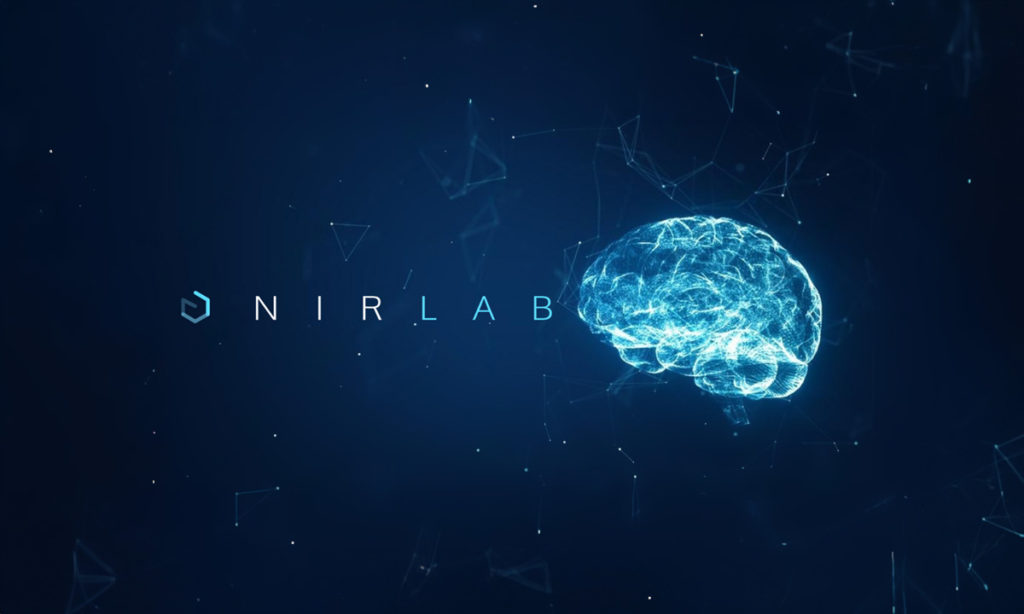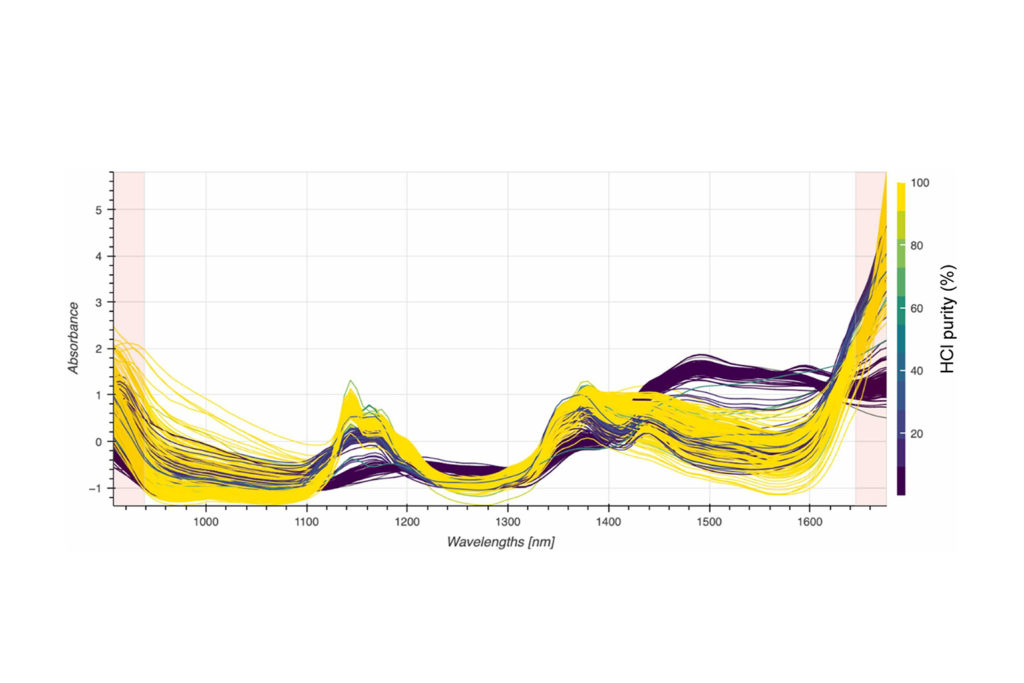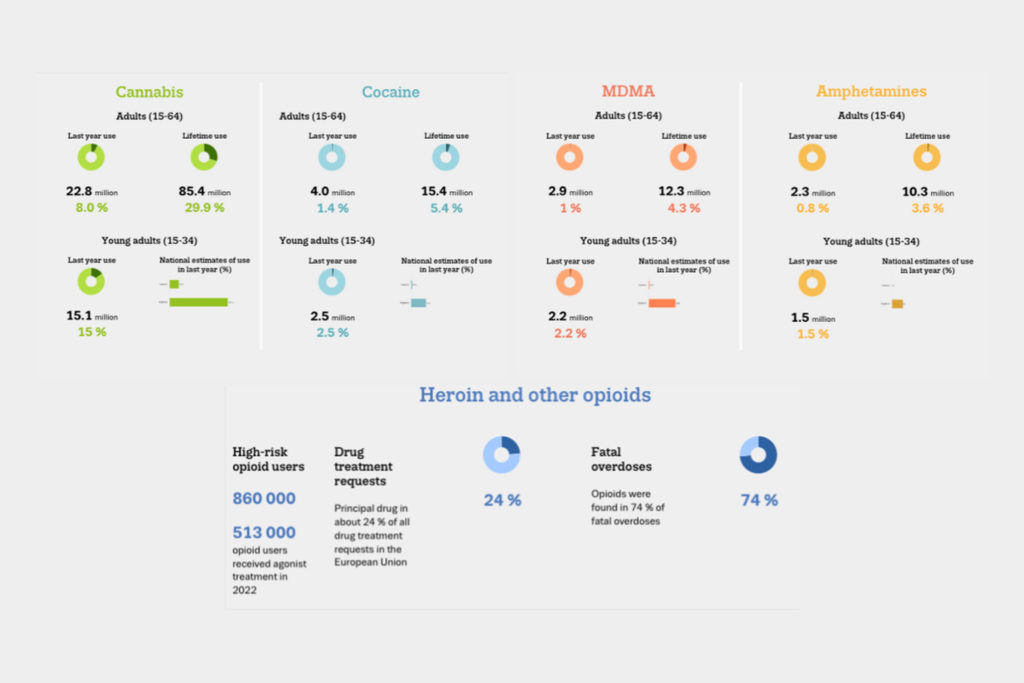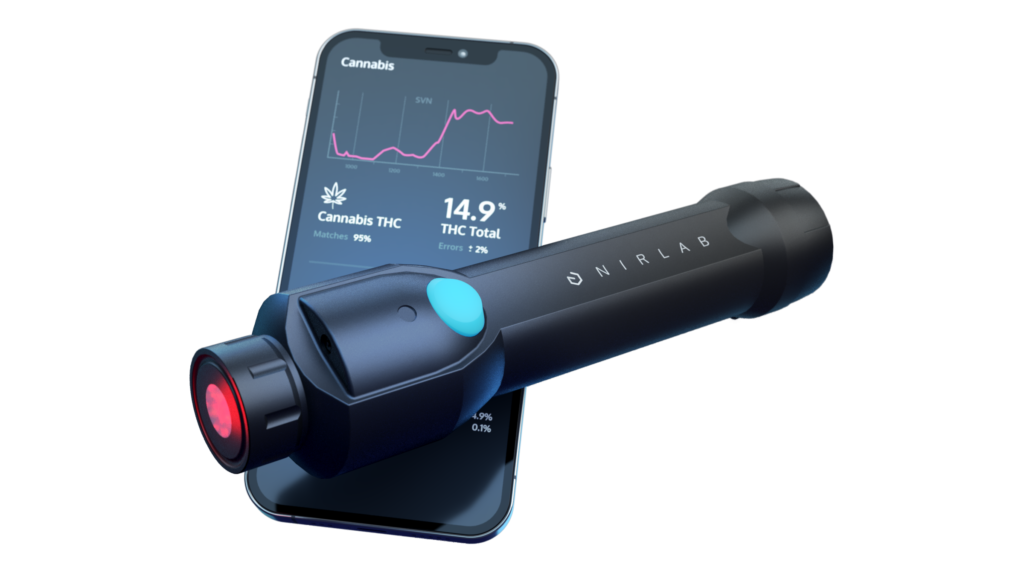
In 2022, the canton of Vaud in Switzerland embarked on a groundbreaking journey, unveiling a pioneering drug checking model that harnessed the power of near-infrared spectroscopy (NIR) and NIRLAB software for on-site drug analysis. This in-depth white paper meticulously dives into the numerous benefits of harm reduction practices, focusing on the intricate implementation of drug checking services before consumption. Drawing insights from an exhaustive case study conducted at festivals in the canton of Vaud, the narrative unfolds seamlessly, navigating the complex interplay of technology and real-world implications. Throughout this exploration, NIRLAB emerges as a key player, acting a pivotal role in fostering safety, informed choices, and the broader ethos of harm reduction.
Introduction: A New Era in Drug Checking
Since the Drug Information and Monitoring System (DIMS) debuted in the Netherlands in 1992, several countries, including Switzerland, have adopted drug checking services to mitigate risks from illicit drug use. In 2022, Canton of Vaud in Switzerland initiated a pilot using a novel ultra-portable micro near-infrared spectrometer (NIR) with a mobile app, developed by NIRLAB AG and the University of Lausanne. This system delivers real-time results by comparing with extensive substance sample databases. Coupled with user interviews, it also facilitates harm reduction counseling. To validate the NIR outcomes, samples were also tested using gas chromatography-mass spectrometry (GC-MS).

Figure 1 – Handheld, wireless spectrometer
NIRLAB’s Breakthrough Technology: The NIRlight Spectrometer
The NIRlight is NIRLAB’s innovative, ultra-compact spectrometer. With integrated battery, button, and Bluetooth wireless communication, the NIRlight is the ideal
solution for mobile material analysis in the field. The NIRlight is the smallest fully integrated NIR spectrometer on the market. The NIRlight is available with NIRLAB’s mobile and web solution for remote sample identification using an iOS or Android mobile phone.
The mobile app has a simple, intuitive interface that provides real-time identification and quantification of illicit drugs, cutting agents and precursors.
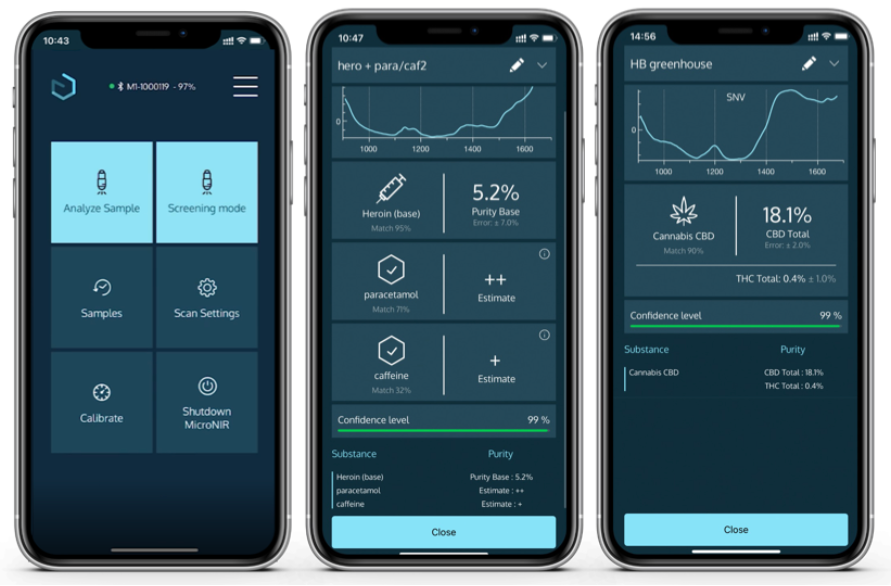
The NIRLAB Mobile App connects wirelessly to the NIRlight to offer sample identification in one second with a single button press. Results are displayed on the connected mobile phone screen.
The sample name can be entered manually or using a bar code reader. A photo and geolocation ID can be attached to the scan and synced with the NIRLAB web app. All access is protected by a UserID and Password. The Web app can also manage the NIRlight fleet. Users can be assigned to specific methods and instruments and tracked remotely. All results collected via the mobile app can be uploaded to a secure cloud database and viewed by instrument serial number, operator, or date.
Laboratory Analysis: Ensuring Measurement Accuracy
To assess NIRLAB’s measurement accuracy, both qualitatively and quantitatively, consumers were requested to provide a portion of their sample for additional analysis. In the lab, gas chromatography with mass spectrometry (GC-MS) or flame ionization detector (GC-FID) was utilized for identification and quantification. When GC-MS results were uncertain, Raman spectroscopy and Fourier-transform infrared spectroscopy (FTIR) were employed for validation.
Settings for Drug Checking
The effectiveness of the drug checking model was evaluated in two distinct settings: the dynamic atmosphere of festivals and the controlled environment of a stationary location in one of the biggest cities in Canton Vaud. The stationary facility operated every week on the same day and time. This provided a consistent platform for individuals to analyze substances and engage in harm reduction discussions.
Results
Festivals
The study has been conducted at ten festivals, during which numerous interviews were conducted with a considerable number of participants. It is important to note that there was an important variation in participant numbers versus interviews. This can be attributed to the fact that nearly half of the users attended with friends. Among the collected samples, a few were deemed unsuitable for NIRLAB analysis due to their unique characteristics or limited quantity. Specifically, substances like LSD and a sparse amphetamine sample posed challenges as they lacked an NIR model or were incompatible with the analysis.
The prevalent festival samples included common substances such as cocaine, MDMD pills, MDMA crystals, cannabis, ketamine, and amphetamine. The average purities (measured in salt percentage) for the primary substances were noteworthy.
Among the samples analyzed by both NIRLAB and GC-MS
methods, NIRLAB demonstrated a commendable accuracy rate in substance identification. In a few instances, there were near-match results or substances were labeled as unknown, presenting unforeseen challenges due to the absence of certain substances in the database. Users were cautioned about potential limitations, particularly in cases where substances were misidentified or not present in the model.
In summary, when NIRLAB successfully identified a substance, GC-MS confirmation was consistently high. Quantitative analysis also provided valuable insights, with the majority of samples showing similar measurements, albeit with some variations attributable to unique sample characteristics.
Stationary permanence
During the ten interventions at the stationary permanence, interviews were conducted with participants, and samples were collected for analysis. Several samples proved challenging for NIR analysis due to their specific form or limited quantities.
In contrast to festival findings, a broader range of substances were identified at the stationary site. This included cannabis products, cocaine, MDMA pills, Ketamine, MDMA cystals, Amphetamine, LSD, 3-MMC and several new psychoactive substances (NPS). The identification of stimulants and empathogens highlighted users’ proactive approach in confirming substance composition and purity, reflecting a commitment to safety and informed decision-making.
The mean purities for the primary substances at the stationary site were comparable to those observed at festivals, suggesting a potential shared market origin. The identification and analysis of various samples using both NIR and GC-MS methods provided valuable insights, with considerations given to the limitations of the analytical techniques and the uniqueness of certain samples.
In conclusion, the analysis at the stationary site, though presenting challenges with more unconventional samples, contributed to a comprehensive understanding of substance composition and purity, further emphasizing the importance of analytical techniques and informed decision-making in harm reduction efforts.
Customer similarities
Within festival and consumption room settings, an apparent trend emerges as participants express a keen interest in testing their substances before use. This inclination towards drug testing and signifies an increasing awareness and dedication to harm reduction practices in these environments. Numerous studies consistently demonstrate that a substantial percentage of individuals share the aspiration to test substances before consumption, indicative of a transformative shift in
attitudes towards responsible drug use. For example, a study at an Irish festival reported 96.3% of drug users expressing the desire to test substances before consumption. This collective sentiment underscores a broader sociocultural change, emphasizing the imperative for accessible and effective drug checking services to meet the evolving needs of individuals navigating the intricate landscape of recreational drug use.
Conclusion
In conclusion, the canton of Vaud’s pioneering drug checking model, employing near-infrared spectroscopy (NIR) and NIRLAB software, represents a paradigm shift in harm reduction practices. This white paper extensively explores the relationship of technology and real-world implications, focusing on the intricate deployment of drug checking services before consumption. NIRLAB emerges as a key player, fostering safety, informed choices, and the broader ethos of harm reduction.
The global trajectory, initiated by initiatives like the Drug Information and Monitoring System (DIMS), finds resonance in the innovative 2022 pilot program in Vaud. Leveraging the ultra-portable NIRlight spectrometer and mobile app developed by NIRLAB AG and the University of Lausanne, the system delivers real-time results and facilitates harm reduction counseling. The validation process, integrating user interviews and cross-referencing with gas chromatography-mass spectrometry (GC-MS), underlines the reliability of NIRLAB’s outcomes.
NIRLAB’s technology, epitomized by the compact NIRLIGHT spectrometer and its seamless integration with mobile and web solutions, underscores efficiency in on- site substance identification. Evaluation in festivals and stationary settings accentuates the model’s versatility, addressing challenges and successes in diverse environments.
Festival findings reveal the communal nature of drug experiences, with varied substances identified and NIRLAB’s commendable accuracy in substance identification. The stationary site unveils a broader spectrum of substances, emphasizing the importance of analytical techniques and informed decision-making.
Exploring customer similarities across festival and consumption room settings, numerous studies consistently validate the shared interest in proactive substance testing. For example, the Irish festival study, reporting 96.3% of drug users expressing the desire to test substances, underscores a transformative shift towards responsible drug use.
In essence, this white paper illuminates the significance of the Vaud model, exemplifying the evolution of harm reduction practices and the crucial role played by NIRLAB. As society navigates the intricate landscape of recreational drug use, accessible and effective drug checking services become imperative, aligning with evolving norms and individual preferences for informed and responsible choices.
To explore more about spectroscopy and discover the full capabilities of NIRLAB’s technology, we invite you to read our other informative articles, here. For personalized inquiries, please don’t hesitate to reach out to us at contact@nirlab.com.
NIRLAB // Just Truth
